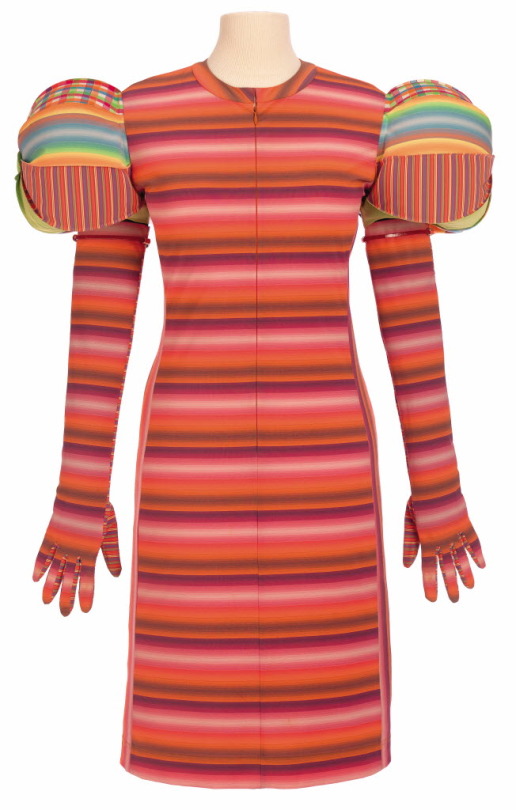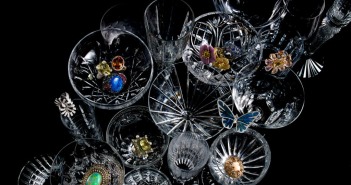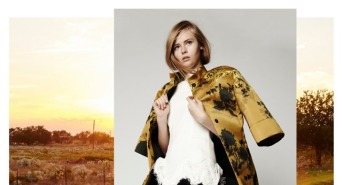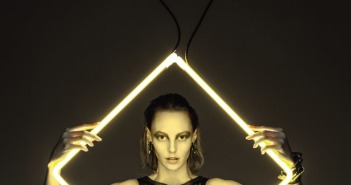Triangles, trapezoids and ovals: How the Crow’s new Japanese fashion exhibit teaches conventional clothes a thing or two
by HOLLY HABER | photographs by ROB DESLONGCHAMPS AND SCOTT HISEY
Rei Kawakubo, Issey Miyake and Yohji Yamamoto are among the most iconoclastic fashion designers in the world. Season after season, their Paris runway shows surprise, astound and sometimes confound with unconventional proportions, unusual shapes and unexpected materials. They don’t push boundaries —they break them.
The artful togs of these Japanese mavericks appeal to tastemakers (such as the late Dallas fashion legend Shelly Musselman) and curators, such as Mary Baskett, a Cincinnati gallerist of Japanese art who wears their creations almost exclusively. About 20 highlights of Baskett’s unique closet will launch a new, expanded gallery at the Crow Collection of Asian Art from October 25 to February 22.
“Eastern dress is very loose on the body,” says Cynthia Amnéus, who put the show together and is curator of fashion arts and textiles at the Cincinnati Art Museum, where Baskett formerly worked. “A kimono is made of big rectangles, and there are many layers one on top of the other. It’s a different fundamental construction. It’s not about showing that hourglass figure that we are so obsessed with.” Among the standouts are a cartoonish flat pink oval jacket and trapezoidal skirt by Kawakubo, a Yamamoto jacket with sleeves that can be worn or left dangling, and a sculptural pleated red frock by Miyake.
“Everything in the exhibition [Baskett] wears or has worn,” explains Amnéus. “It was a very difficult paring-down process for me.” Amnéus has faced this challenge before, curating exhibitions of Baskett’s wardrobe at CAM in 2009 and the Textile Museum in Washington, D.C., the following year. With styles spanning from 1977 to 2012, the Mary Baskett Collection of Japanese Fashion at the Crow will be largely different. “I wanted to show some of the newer pieces that are really fabulous,” she says, “and some that are so important that I am showing them again.” She also borrowed four of Baskett’s 19th-century prints of Japanese women in traditional dress to illustrate the connection between the designers’ groundbreaking work and their cultural heritage.
Rei Kawakubo, who inspired the idiosyncratic Edna character in The Incredibles, is probably the most conceptual of the moderns. “She is not concerned with following trends or creating pretty clothes,” Amnéus says. “She is creating art pieces that happen to fit on the body.”









